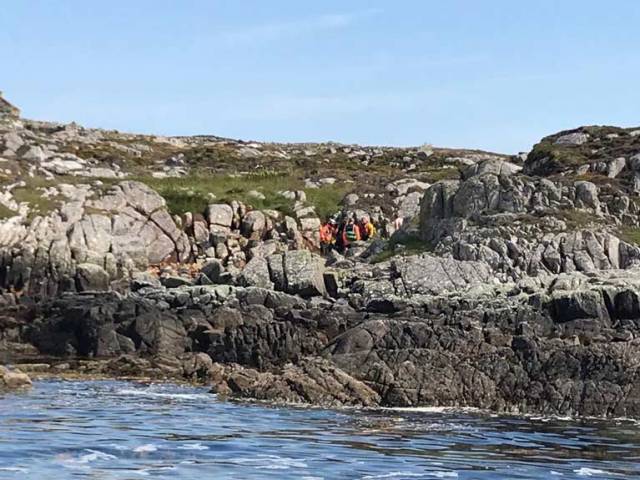A man whose leg got trapped on the Connemara shoreline during a rising tide was brought to safety in a multi-agency rescue on Thursday evening writes Lorna Siggins
The incident occurred when a couple were out walking at Slackport on Slyne Head, close to Ballyconneely, according to the RNLI Clifden lifeboat station.
The man fell on the shoreline, trapping his leg badly in some rocks and was unable to free himself. RNLI Clifden station press officer Catherine Pryce says the location was close to the high watermark in a rising spring tide.
The RNLI Clifden lifeboat and Cleggan Coast Guard volunteers, along with the Irish Coast Guard Rescue 118 helicopter from Sligo responded after the couple raised the alarm.
Clifden’s Atlantic 85 inshore lifeboat was launched with Joe Acton at the helm, along with the station’s Mersey class all-weather lifeboat under the command of coxswain James Mullen.
“ The Atlantic 85 was first on the scene and crewman Alan Pryce went ashore to assess the situation and administer first aid. Alan was quickly joined by two more crew members from Clifden’s all-weather boat,” Ms Pryce said.
The man’s injuries were assessed, and he was winched up to safety by the Sligo helicopter crew.
Clifden’s RNLI lifeboat station took delivery of a new all-weather Shannon class lifeboat earlier this week, which will increase the station’s range and capability.
‘This was an urgent and very serious call out and the crew located and assisted the casualty very quickly,” Clifden RNLI operations manager John Brittain said.
“ It has been a very busy week for our station with the arrival of our new Shannon class lifeboat, and the crew once again demonstrated that they are always there to respond when needed, working closely and effectively with our Coast Guard colleagues," Mr Brittain added.
































































